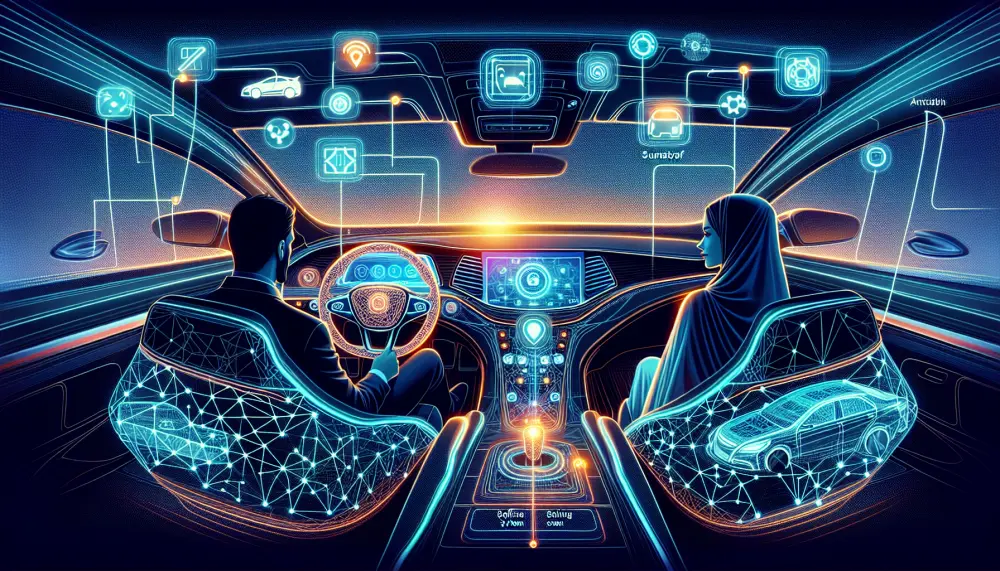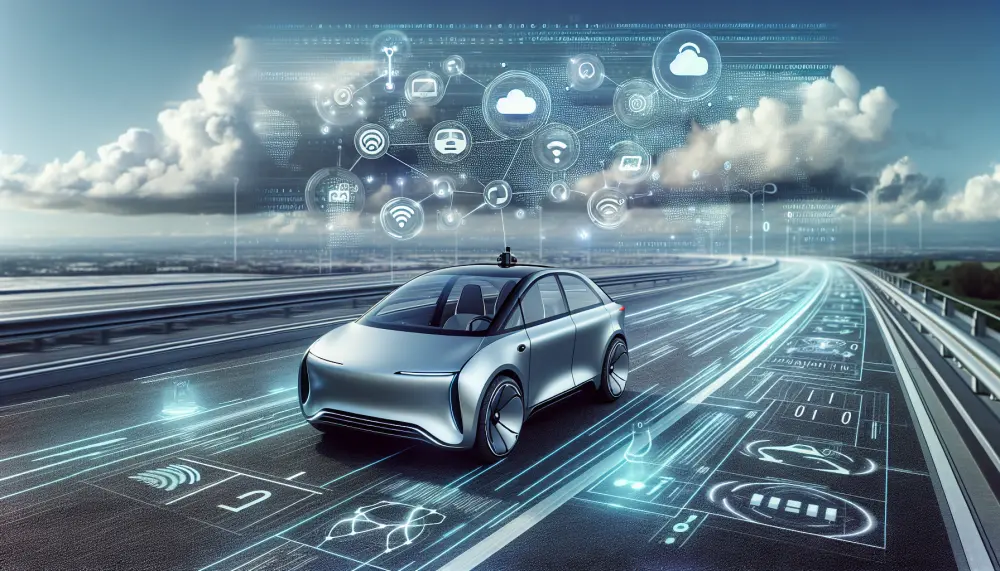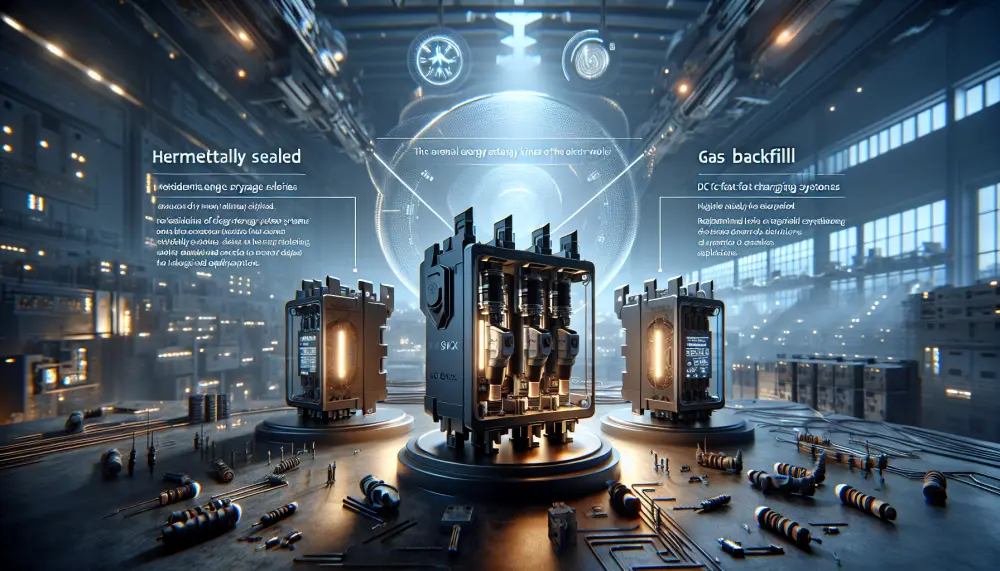Software-Defined Vehicles: The New Frontier in Zonal Architectures and Automotive Innovation


Introduction to Zonal Architectures: The Future of Auto Tech
Picture this: Your car is no longer just a mechanical beast but an intricate network of interconnected zones, each humming with efficiency and precision. Welcome to the world of software-defined vehicles (SDVs) powered by zonal architectures.
As automotive technology shifts gear from the traditional to the digital, zonal architectures have emerged as the newest hotshot in town. Imagine each part of your car, from the seats to the sunroof, possessing its own 'brain' and communicating seamlessly with the other parts. It's like having a group of highly-efficient team members each specializing in a different task, ensuring that the entire system works like a well-oiled machine.
What Exactly Are Zonal Architectures?
In simplest terms, a zonal architecture divides the vehicle into specific “zones.” Each zone is responsible for particular functions and is managed through localized computing platforms. Think of it like a ship with different compartments: the engine room, navigation, and crew quarters, each optimized for its respective role but seamlessly integrating into the ship's overall operations.
- Enhanced Interconnectivity: Local zones communicate more efficiently.
- Improved System Management: Easier to update and manage software and hardware stacks.
- Increased Performance: Targeted optimizations lead to improved overall vehicle performance.
But wait, there’s more. Zonal architectures also pave the way for greater personalization and specific use-cases tailored to individual preferences, making each drive uniquely yours.
Why Zonal Architectures Matter: Benefits Galore!
Imagine trying to control every single device in your smart home from one switch panel. Talk about a logistical nightmare! Zonal architectures, similarly, distribute control in a way that simplifies management and boosts efficiency. Here’s why it is the bee’s knees:
- Customization: Tailor each zone for specialized functions and preferences.
- Safety: Enhanced safety features through localized control units.
- Efficiency: Reduce wire length and weight, leading to energy efficiency.
Customization at Its Best
Zonal architectures offer a new playground for customization. Your vehicle's optimization isn’t one-size-fits-all; it evolves with your driving style, needs, and preferences. We’re talking about cars that get you like your Spotify playlist.
Enhanced Safety Measures
When driving, safety isn’t just a luxury—it’s a necessity. With localized control units in various zones, the response time for safety features like airbag deployment and brake control is faster and more reliable. It’s like having a personal bodyguard system built right into your vehicle.
Efficiency and Sustainability
In today’s eco-conscious landscape, zonal architectures offer the added perk of reduced wiring and weight. This isn’t just a win for your car’s performance but also a big green thumbs-up for Mother Earth. Less wiring means less material usage and lighter vehicles, translating to better fuel economy or extended battery life in electric vehicles.
Embracing the Software-Defined Vehicle (SDV) Era
Let’s take a moment to appreciate the magic that is the software-defined vehicle. Unlike traditional vehicles where hardware is the star, SDVs put software at the wheel. This creates a dynamic environment that can be continually updated and improved without the need for physical alterations. The possibilities here are akin to having a Swiss Army knife on four wheels.
Future-Forward Innovations
From advanced driver-assistance systems (ADAS) to autonomous driving features, the advent of SDVs under zonal architectures heralds a new era replete with innovative possibilities. Imagine driving down the freeway as your car autonomously adjusts the seat for maximum comfort, tunes into your favorite podcast, and navigates you through the quickest route—all while you sit back and enjoy.
Virtualization and Co-Design Considerations
The shift toward zonal architectures involves more than just fancy chips and sleek wires; it demands a coalescence of software and hardware design considerations. Virtualization plays a critical role here by allowing multiple applications to run on a single physical platform—think of it as a magician pulling out endless rabbits from the same hat. This ensures peak performance while minimizing resource usage.
How to Get Onboard: Practical Steps for Engineers
So, how can engineers dive into this exciting pool of opportunities? Here’s a straightforward path:
- Understand the Zones: Get familiar with which vehicle functionalities can be zoned.
- Choose the Right Tools: Invest in software and hardware that support zonal architectures.
- Continuous Learning: Engage with resources like Mouser’s Empowering Innovation Together series for the latest insights.
Learning from the Pros
For those who love a good deep dive, Mouser’s Empowering Innovation Together technology series, along with its comprehensive podcasts, articles, videos, and infographics, offers a treasure trove of knowledge. Raymond Yin and Christian Uebber’s engaging discussions bring these complex concepts down to earth, rendering them accessible and actionable.
Conclusion: The Road Ahead
The themed future of zonal architectures might sound like a sci-fi fantasy, but it's already revving up on the automotive horizon. As vehicles morph into hyper-connected, software-defined hubs of innovation, the benefits are manifold.
From enhanced safety to tailored driving experiences and improved efficiency, zonal architectures are amplifying the driving experience to levels previously unimagined. And let’s not ignore the environmental brownie points—less wiring and more efficient energy use make Mother Earth just as happy as the drivers.
So as we zoom ahead, full throttle, let’s remember: the future isn’t just about getting from Point A to Point B, it's about how intelligently and safely we make that journey. Here’s to navigating this brave new world, one zone at a time.
For more fascinating insights and the latest trends in automotive technology, don’t forget to check out the extensive resources and technical guides from Mouser Electronics. Keep your seatbelts fastened; the journey is just beginning!


